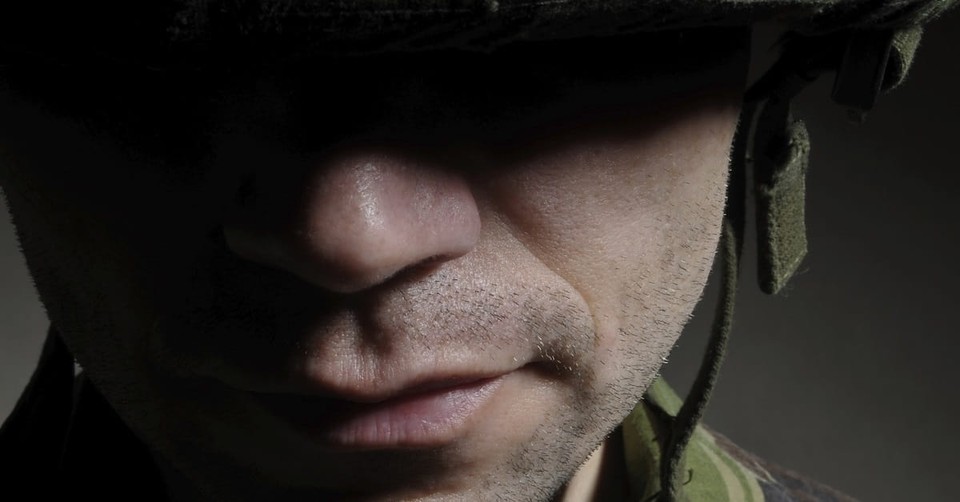I recently sat down with Emil Styka of Boardman, Ohio. A friend of Emil’s, Jo Ann Bryan, had emailed in response to an article I wrote on a remarkable World War II campaign at the Aleutian Islands, off the Alaskan coast. The article was published nationwide, including in the Youngstown Vindicator, where it caught Emil’s attention.
“Finally, now people know,” said Emil, who spent two years in the Aleutians. Too few Americans knew of the Aleutians, let alone their strategic importance and the sacrifices made by those unfortunate American boys deployed there.
Emil Styka was one of them.
The 91-year-old Emil could pass for 71. He showed me his discharge papers, his patches, his uniform jacket—immaculate, as if just issued. The pants from his uniform were gone, as Emil wore them out when he returned to civilian life.
Emil regretted that he didn’t have his helmet, which was actually a WWI helmet. At his discharge, he was refused permission to keep it—an outrage, as it was not only quite a memento but had been signed by Al Jolson, who entertained Emil and his fellow troops at a USO show during the horrendous cold and boredom they endured in Alaska.
Emil’s life had been typical of many boys of his generation. He was born on April 13, 1919, to Polish immigrants. His mother, who lived to be 106, ran the Southland Dairy store in Youngstown, Ohio. Emil worked there as a soda jerk, making the best root-beer floats around. His father and brother worked for Wonder Bread, the father a baker and brother a dough-maker.
Emil was drafted into the Army in October 1941, and stationed at Ft. Monmouth, New Jersey. He recalls being in a movie theater, on a date, the evening of December 7, 1941, when the lights suddenly came on. A military officer announced that all active servicemen were required to leave immediately and report to the base—details to follow. Emil talked the officer into allowing him to drive his date home first. When Emil got to the base, he learned about Pearl Harbor.
Soon, Emil was a member of the U.S. Army 5275th Air Warning and Control Squadron. Formally, he became Sergeant Styka, not to be confused with Sergeant Stryker, of John Wayne fame.
Emil made his way north—way north, to Alaska, traversing up the Bering Sea, to Anchorage, to Dutch Harbor, to Attu. These were the crucial Aleutian Islands, where a hellacious battle took place, one that Emil mercifully missed. The trip up the Bering Sea was awful, with men so seasick they couldn’t move for days.
When they arrived, Emil and his fellow servicemen lived in tents of four, enduring temperatures 50-60 degrees below zero. During the day, they ventured outside to cut down trees. The wood was hauled into their tents to be burned in pot stoves. They heated water in 55-gallon drums.
Emil humbly downplays his mission. His job was to patrol the skies—from the ground, before the advent of computers—searching for enemy aircraft. The American mainland needed to be aware of approaching Japanese planes looking to strike the West Coast, from Seattle to Los Angeles. From 1942 to 1944, that was a job Emil and his brethren did every day—when not cutting wood.
One day they got a report that caused an immediate panic: Word came in that a huge Japanese force was en route. It turned around, however, upon learning that the USS Missouri was positioned off the coast. How ironic: It was that same USS Missouri upon which Japan would ultimately surrender in September 1945.
After Alaska, Emil was shipped to Manila in the Philippines, to a much different climate. Quite apart from combat, there he would learn of the unexpected death of his father, a lingering painful memory.
Yet, what’s also etched in Emil’s mind is the deadly Armageddon he and his band of brothers averted.
They were set and ready to go as the second wave to hit Okinawa, which experienced among the highest casualty rates in the entire war. A typhoon, however, struck the Philippines, derailing the plans for Emil’s outfit.
Instead, they awaited another call, the most nightmarish of all: the invasion of Japan. What stopped the horror? President Truman’s decision to drop the bomb, which compelled Japan’s surrender.
What if Truman had not dropped the bomb, instead taking the advice of today’s armchair-academic experts? In a best-case scenario, with Japan fighting “only” a few months after an Allied invasion, those initial thrusts by outfits like Emil’s would have been catastrophic, with countless casualties.
“I probably wouldn’t be here,” says the 91-year-old. “I’d been killed. Probably by kamikazes.”
Today, 65 years later, Emil is among an ever-dwindling number of vets who lived to tell the next generation. If you haven’t talked to them, it’s time to politely ask a few questions. With Veterans Day upon us, you have the perfect excuse.








